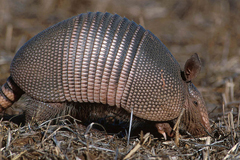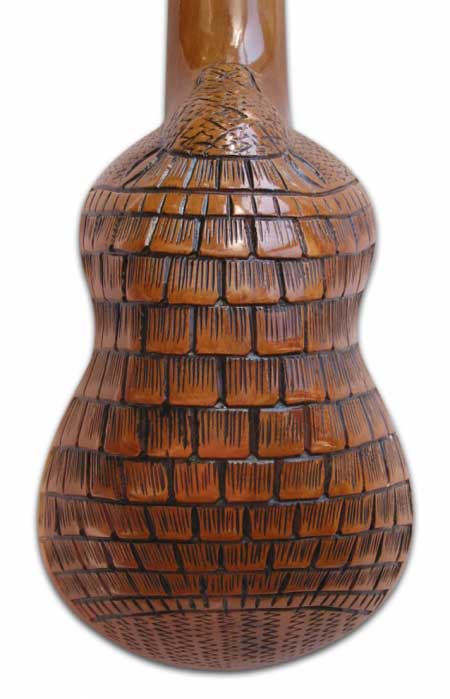Among the quena (Andean flute) and zampoñas (Andean panpipe), the charango is the king of traditional Bolivian Altiplano instruments. It is a stringed instrument, like a small guitar, that first originated in Potosí. It has five double strings and one vibrating string that measures 37-39 cm.
The body was originally made from the shell of the quirquincho (Andean armadillo). Today, because this animal is an endangered species, the body is only made of wood. However, it still looks the same since it is shaped in the form of the animal.
because this animal is an endangered species, the body is only made of wood. However, it still looks the same since it is shaped in the form of the animal.
Traditionally the strings were made of gut, but today they are nylon or steel.
There are many legends about its origin. One states that the indigenous people were inspired by the shape of the vihuela (Spanish guitar), and they made it this size so that they could carry it under a poncho since it was illegal to take up this art.
 This instrument symbolizes the exclusion suffered by Bolivian indigenes, and it has accompanied revolutionary songs for years. Therefore, the charango was prohibited during the military dictatorships beginning in 1973. Today, it is appreciated worldwide by music connoisseurs.
This instrument symbolizes the exclusion suffered by Bolivian indigenes, and it has accompanied revolutionary songs for years. Therefore, the charango was prohibited during the military dictatorships beginning in 1973. Today, it is appreciated worldwide by music connoisseurs.
The charango has five strings (5 doubles) generally tuned g-g, c-c, e-E, a-a, e-e from the tenth to the first. Each is tuned to the same pitch except for the third where the strings are tuned one octave apart.
The instrument is used for Andean folkloric music (carnavalitos, bailecitos, huayños, cuecas, etc.). There are three types of charangos: the walaychu which has a high pitch and measures 50 cm, the charango which has a low pitch and measures 60 cm, and the ronroco which has a deep tone and measures 75 cm.
The quality, and therefore the price, of the charango is based on its material: the quality of the wood, the layer of mother-of-pearl (which protects the instrument), etc. The Bolivian charango is generally shaped from a single piece of wood, which guarantees a high quality finish.
Since it is an instrument that originated in Potosí, the best charango artisans are in La Paz, and Caserita.com works with them.
Artisans learn by experience since the luthier craft can only be learned with years of practice and dedication.


